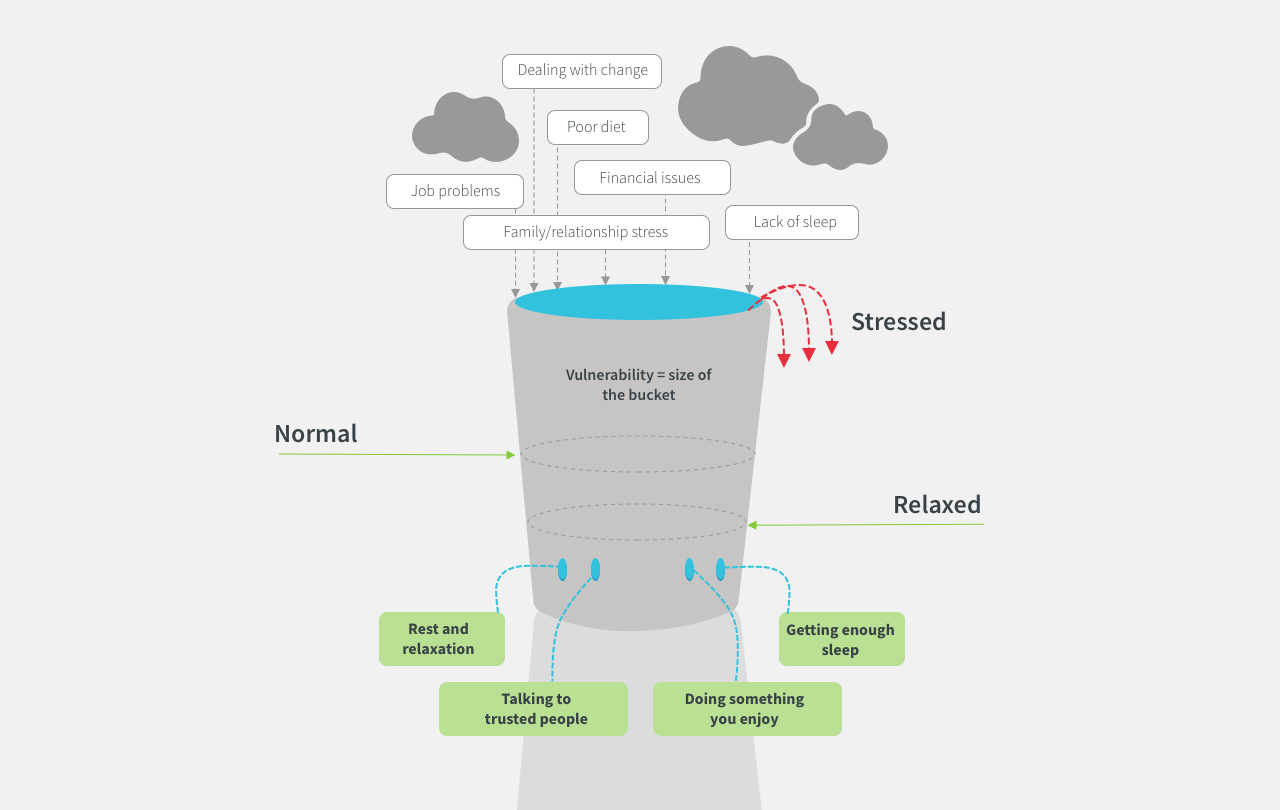At a recent team away day I wanted to get the team thinking and talking about wellbeing, why it matters and how we can help ourselves and each other.

Photo by Brooke Cagle on Unsplash
We are a new team with lots of challenges ahead of us so it felt the perfect time to make the team aware of our wellbeing to make sure we don’t get stressed and we are working to our best abilities.
We all have physical health and we all have mental health. Just like our physical health it goes up and down.
Having good mental health can help us feel better, sleep better and support us in doing the things we want to do. It can also help us have positive relationships with those around us and manage difficult times now and in the future.
We don’t need to wait until we are struggling with our mental health. Evidence suggests there are lots of things we can do to protect our mental health and stop issues from getting worse, just as we do with out physical health.
Facts about mental health in the workplace.
10 million adults will experience a mental health issue each year.
1 in 5 people have taken a day off due to stress, but feel unable to tell their employer that mental health is the reason for their absence.
Over half of UK employers would like to do more to improve staff wellbeing but don’t feel they have the right training or guidance.
Mental health issues account for almost 70 million days off sick per year, the most of any health condition.
Almost a third of employees said they would consider leaving their current role in the next year if stress levels in their organisation didn’t improve.
Mental ill health costs UK employers an estimated £26 billion which equates to an average of £1,000 per employee.
(Source: Mental Health First Aid England)
Tools we can use to talk about our stress levels at work
When things get too much it can be hard to explain how and why we are feeling stressed. However there are many tools you can use to help visualise where your stress is coming from and how you can gain back control. These visuals can also be used to speak to other colleagues or managers to explain your situation.
Stress performance curve
The stress performance curve maps out levels of pressure against levels of performance.

It suggests that optimal performance is when levels of pressure are between moderate and high. Not enough pressure can lead to boredom and lack of purpose at work. In contrast, too much pressure can lead to strain and burnout which in turn has a large impact on our performance.
When in work we can use this graph to reflect on where we are currently on the graph and start to discuss this with our managers who should be able to help. Having a visual representation can help others gain understanding of how being under too much stress and equally not enough stress can have negative consequences to productivity and performance. The optimal performance part of the curve also give us something to aim for and allows us to check in to make sure we are within that zone.
Stress bucket
The stress bucket helps us to visualise different types of stress we are facing and how we can remove some of these items to help us feel back in control.

Model created by Brabban and Turkington (2002)
The analogy is:
The bucket represents the stress container.
The water filling up represents all different types of stress: for example, bills, deadlines, family, lack of sleep.
And the tap or holes on the bucket represent the ways you can release the stress.
If the water overflows, this is when we feel loss of control and stress really takes over us. And as we are all different, we all have different sized buckets based on how many different types of stress we can manage.
Again, we can use this tool in work to reflect on what is causing our stress levels to rise and remind ourselves of ways to release the stress and get back in control. In work, we can use the bucket to help communicate to colleagues or managers understand what is causing our stress and ask if they can help us reduce it, perhaps by moving a deadline, getting someone else to help out with a task or asking for some time off to recover.
5 keys to wellbeing
When thinking about the ways to release the stress levels in our bucket we can use a handy set of 5 keys to get us back on track. These are as simple as:
Connect
Be active
Take notice
Keep learning
Give
Looking after our wellbeing builds up our resilience
Building our resilience is essential, as when things get too much:
One, we are in a better mind set to take on the challenge
And two, we have a set of tools to help us manage and think clearly.
Further reading
Need urgent help?
Please contact:
Someone you trust
Shout Crisis Text Line
Samaritans